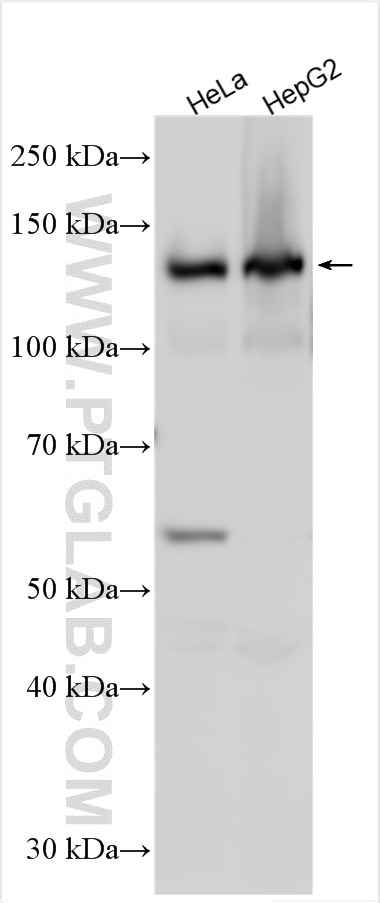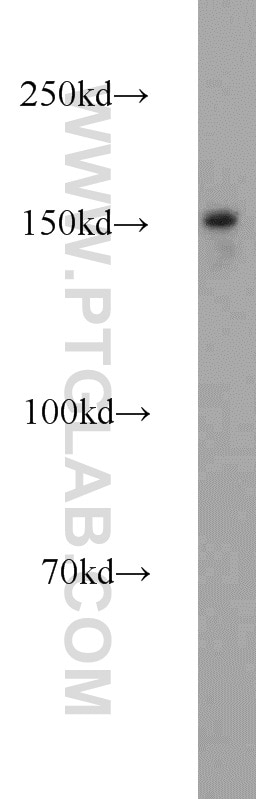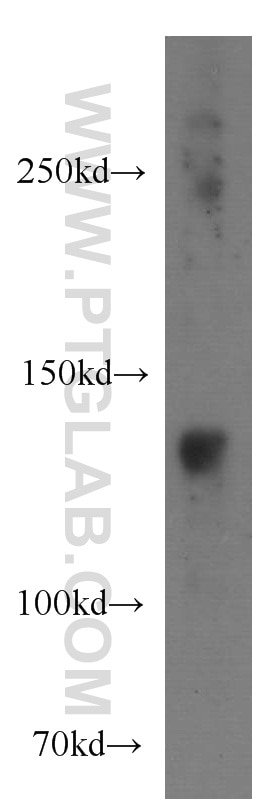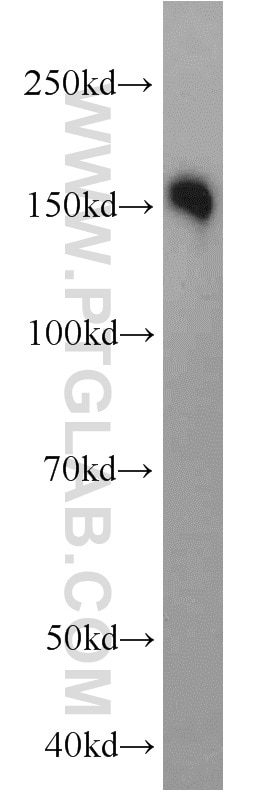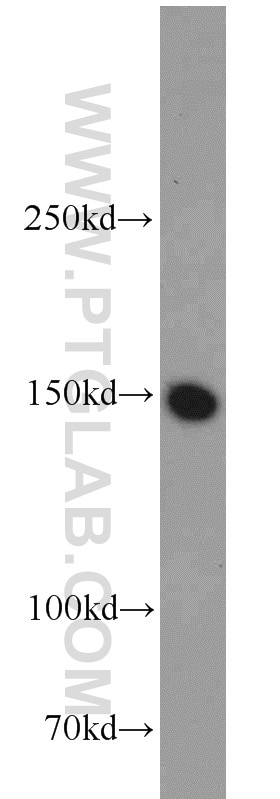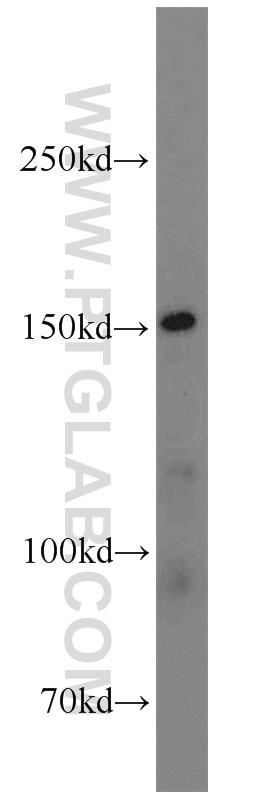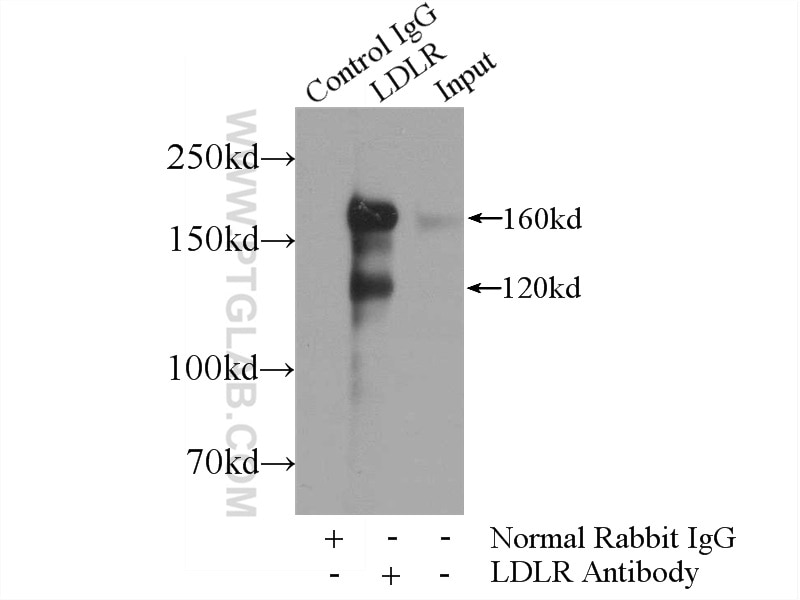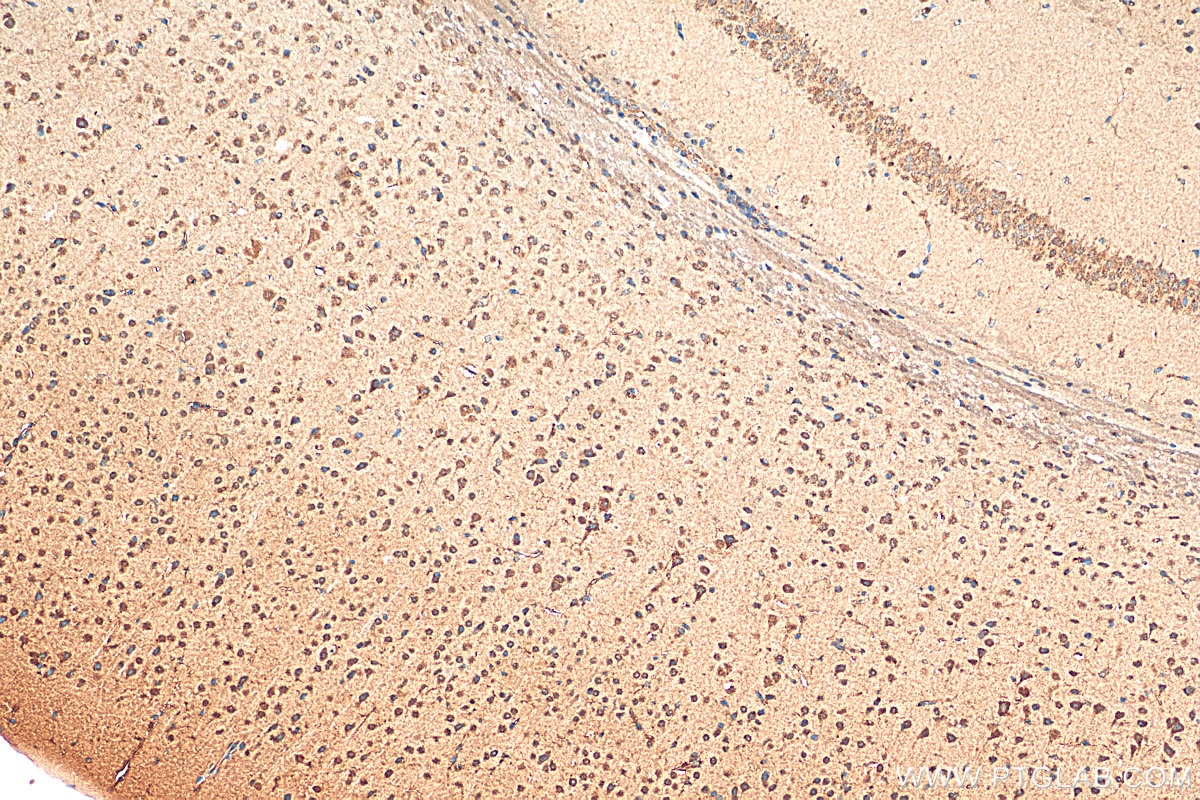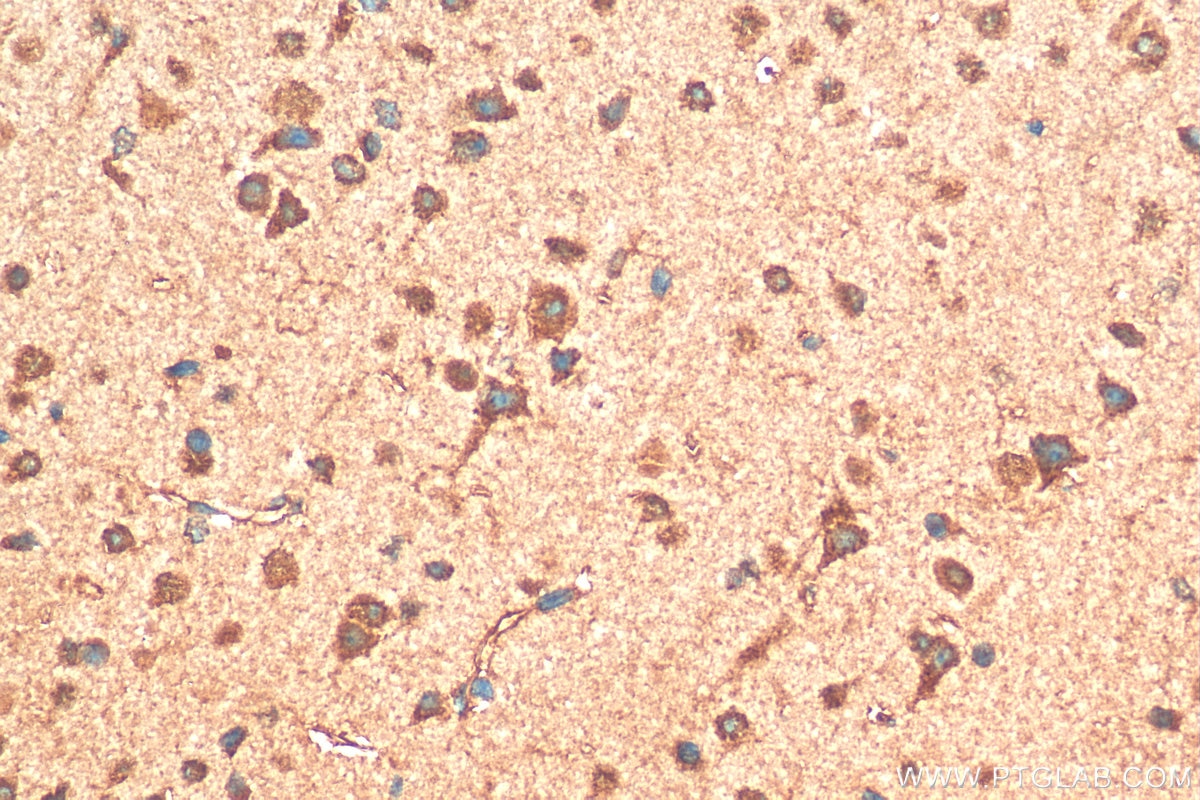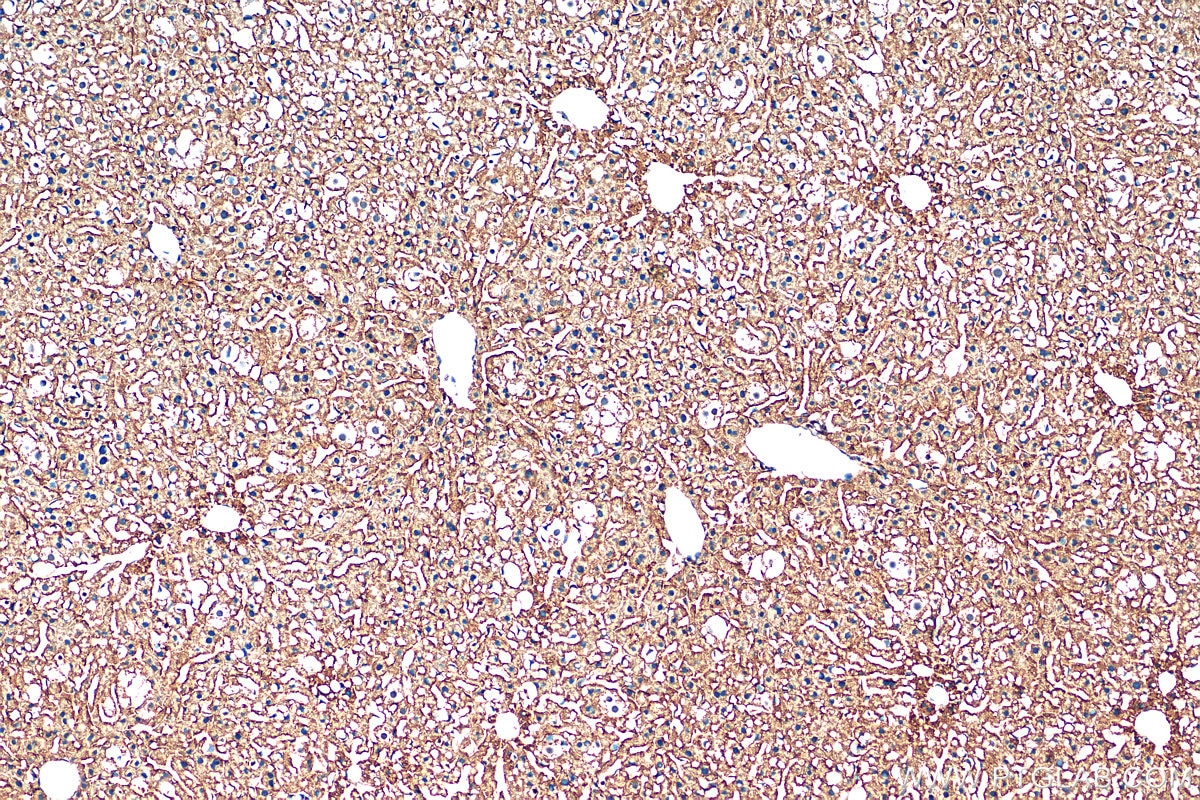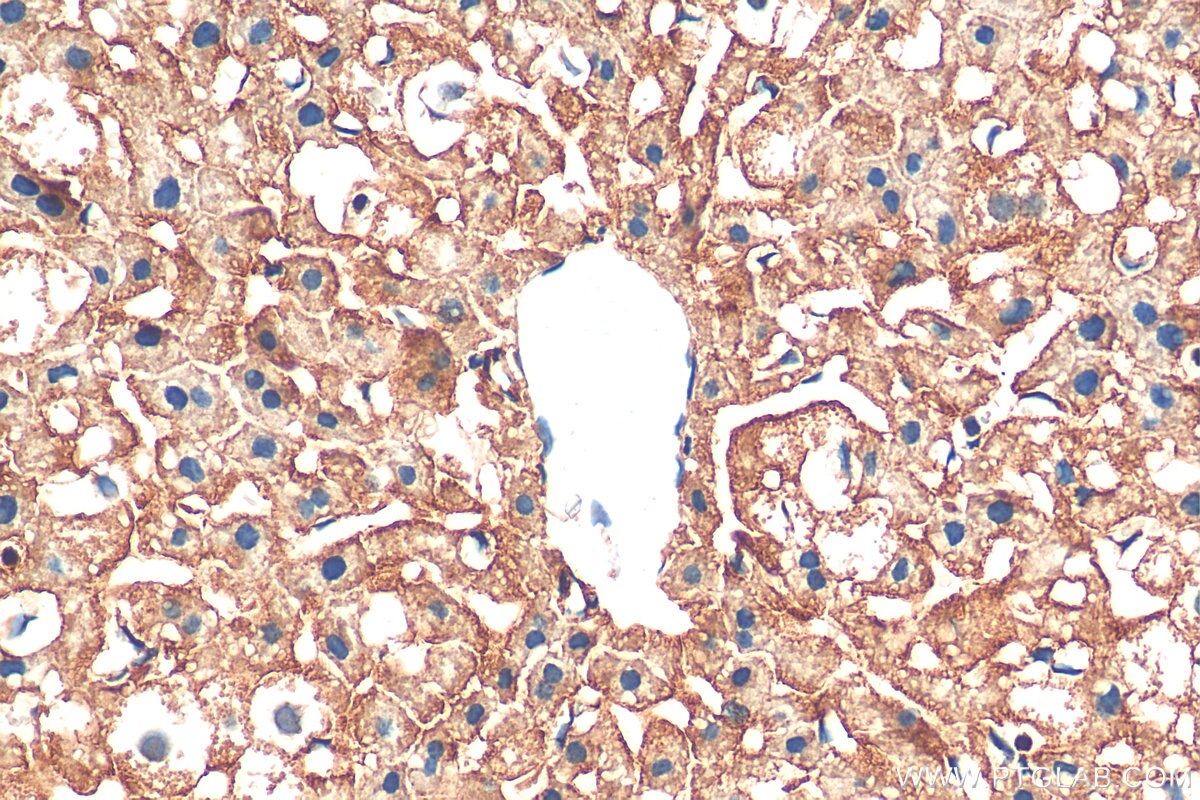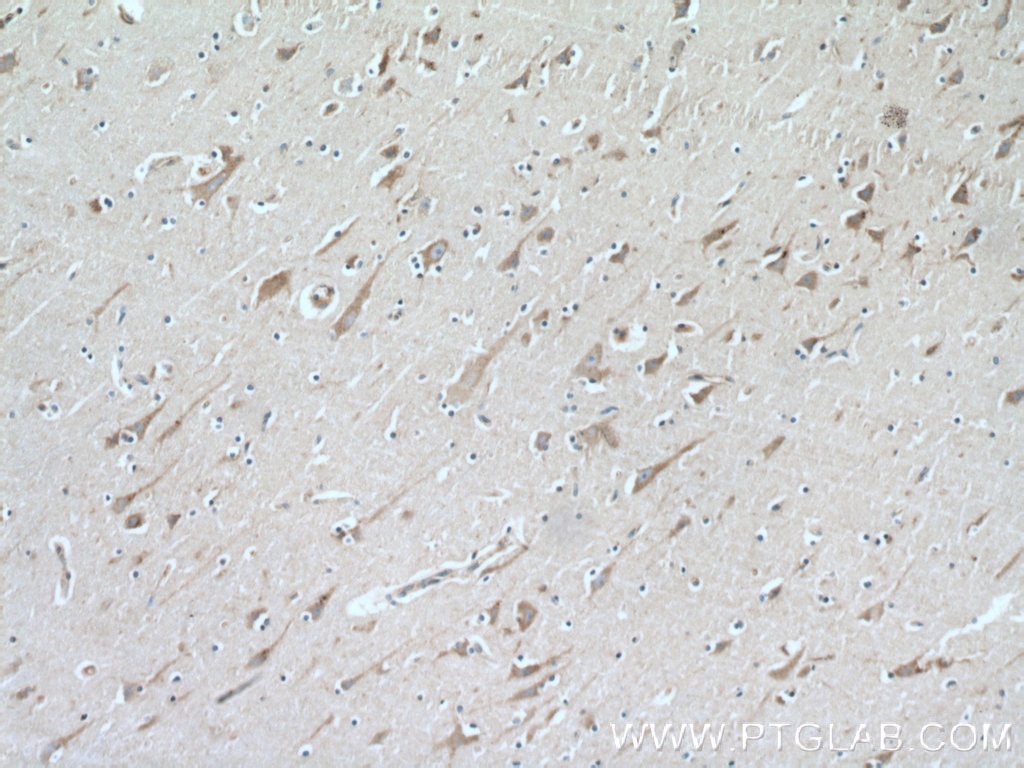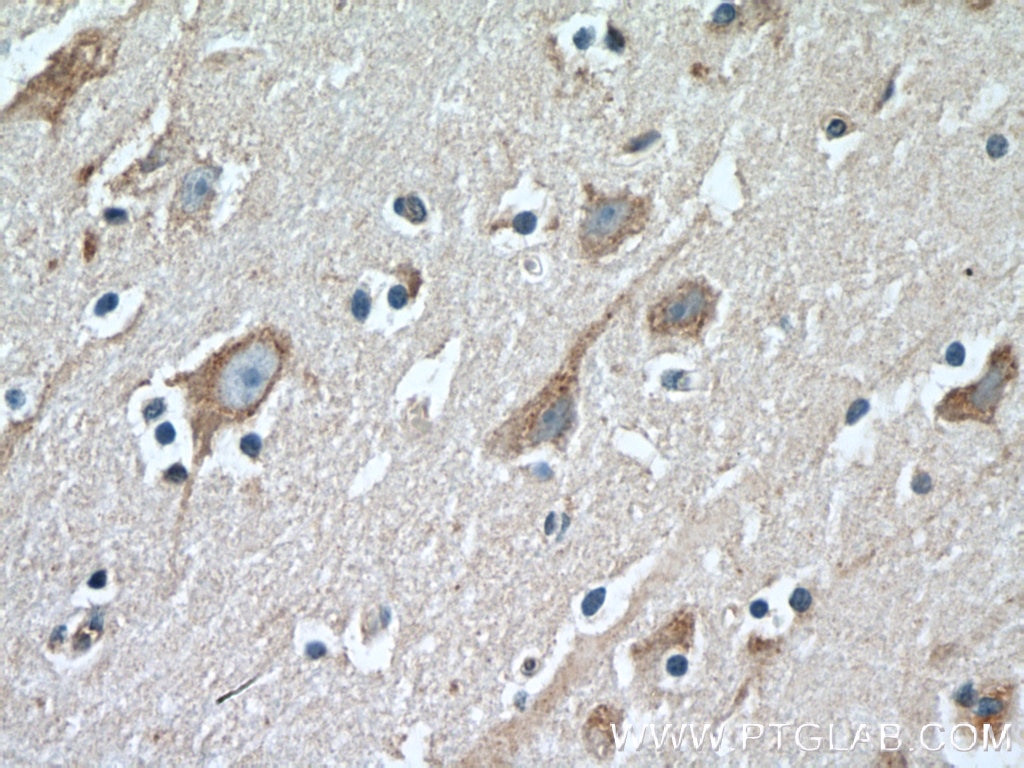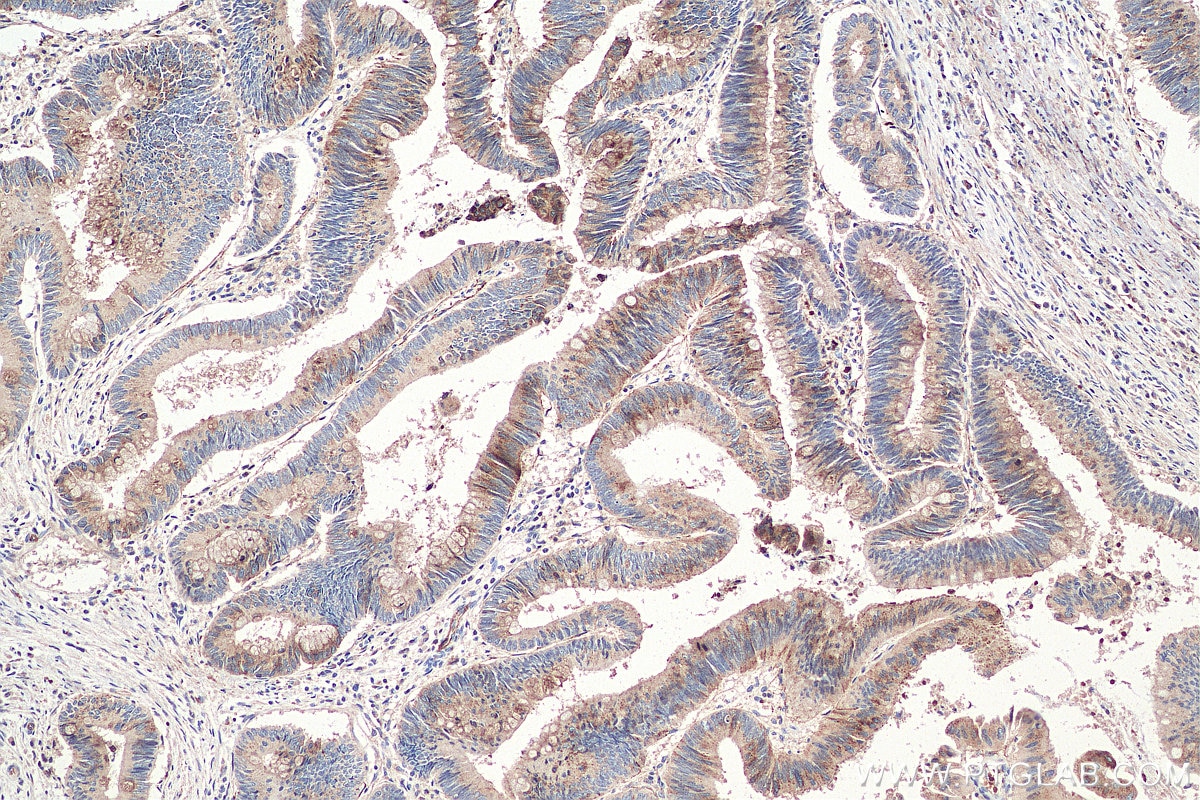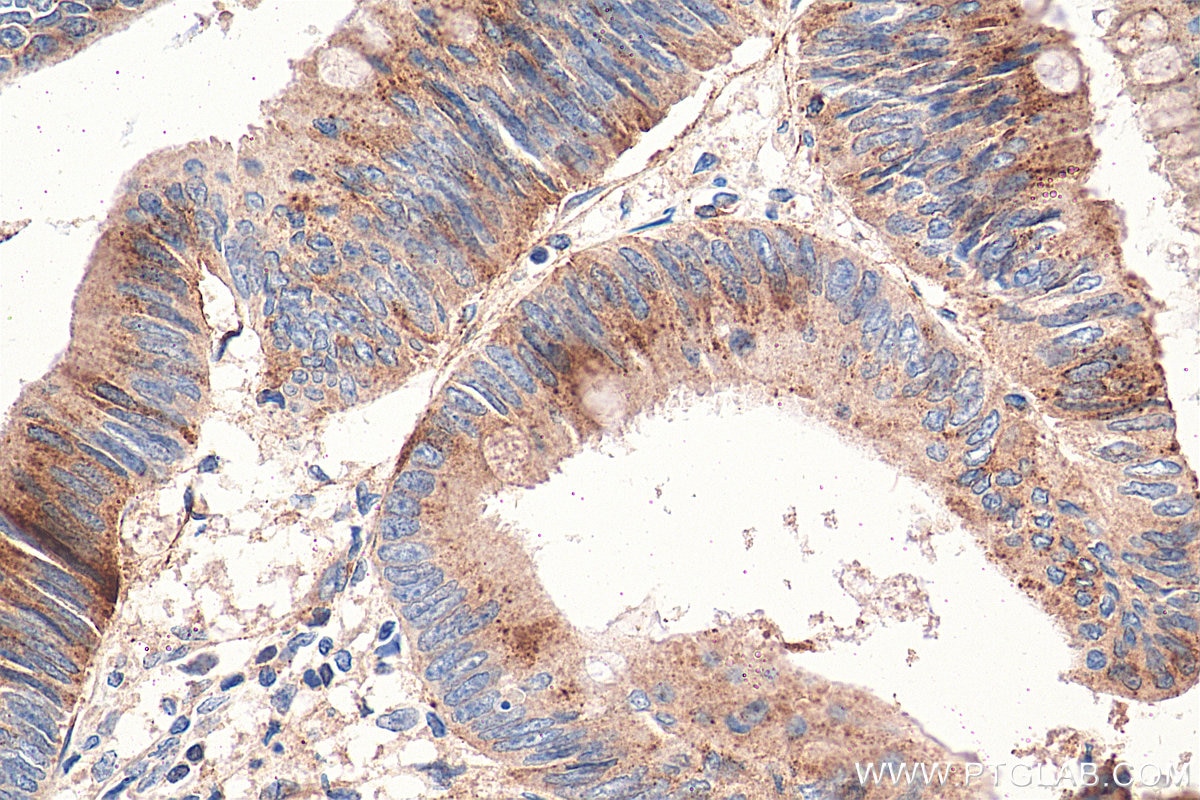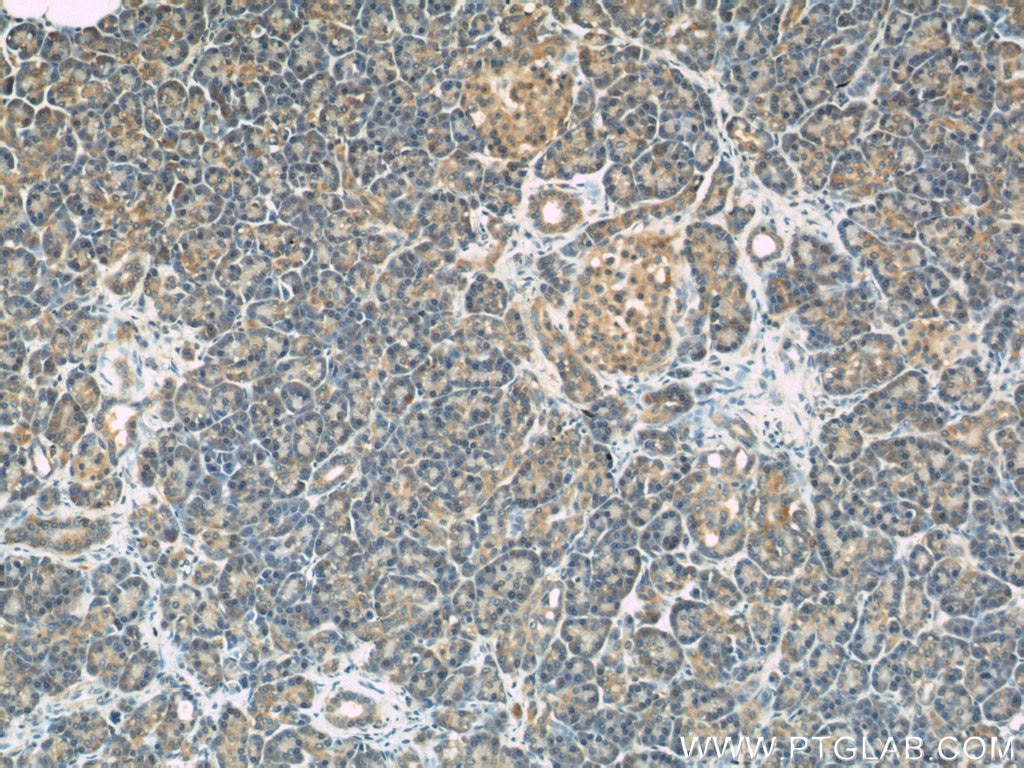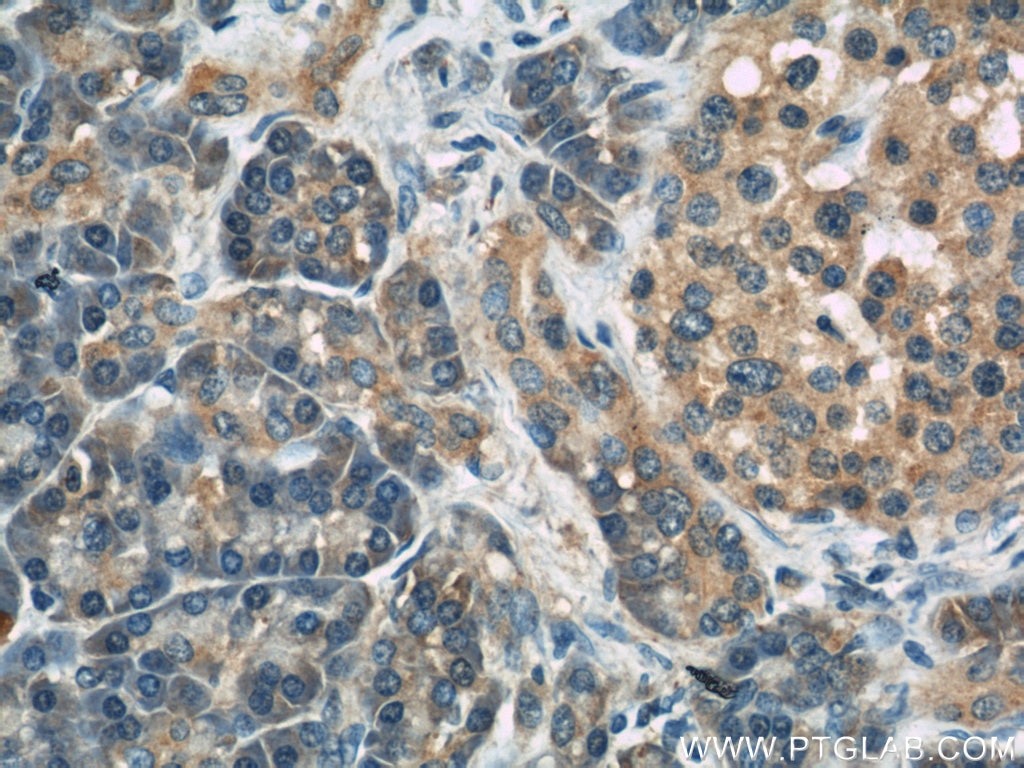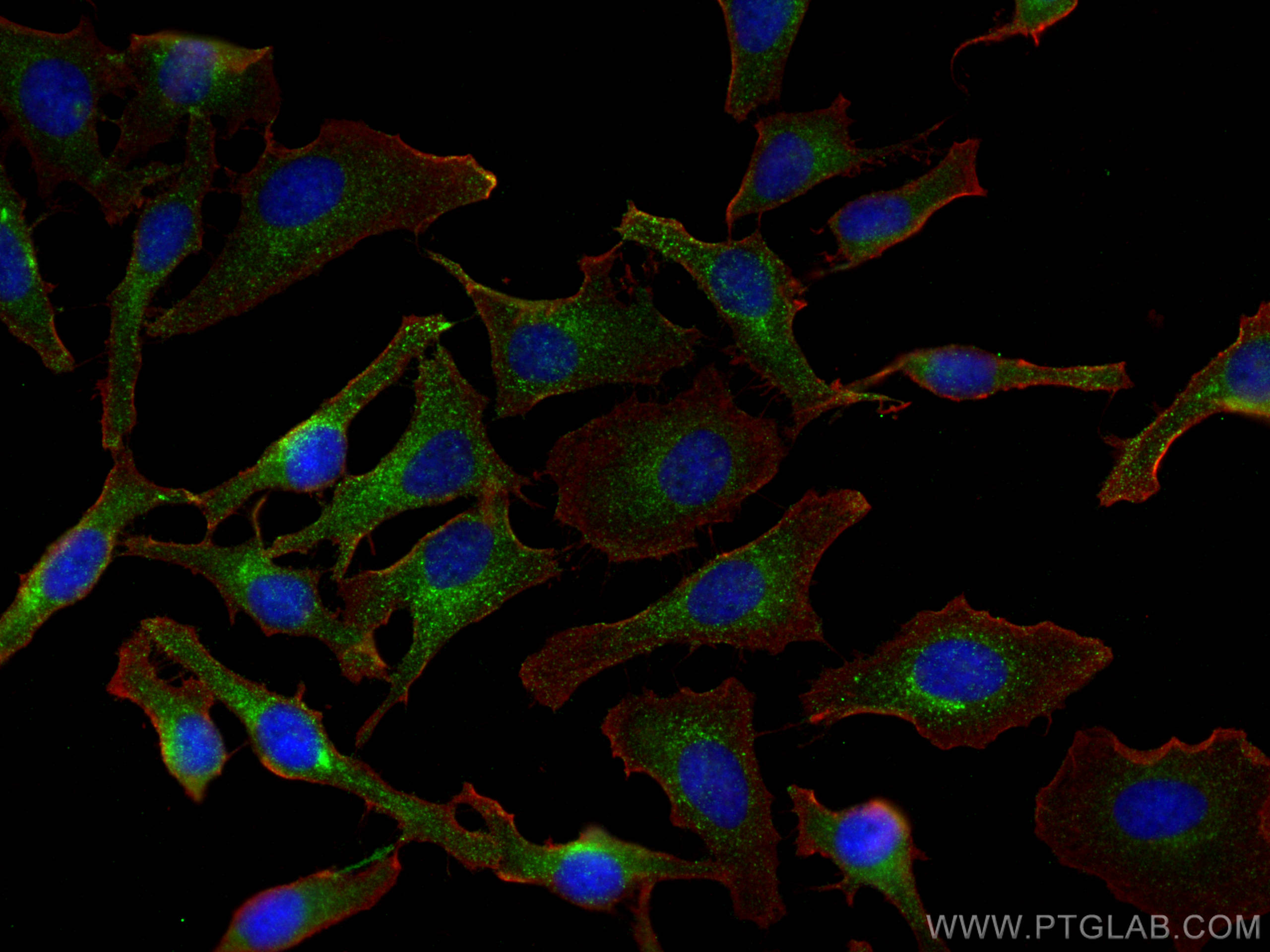- Phare
- Validé par KD/KO
Anticorps Polyclonal de lapin anti-LDLR
LDLR Polyclonal Antibody for WB, IHC, IF/ICC, IP, ELISA
Hôte / Isotype
Lapin / IgG
Réactivité testée
Humain, souris et plus (4)
Applications
WB, IHC, IF/ICC, IP, ELISA
Conjugaison
Non conjugué
N° de cat : 10785-1-AP
Synonymes
Galerie de données de validation
Applications testées
| Résultats positifs en WB | cellules HeLa, cellules HepG2, cellules HL-60, cellules Jurkat, cellules Raji, tissu cérébral de souris, tissu cérébral humain |
| Résultats positifs en IP | cellules HeLa |
| Résultats positifs en IHC | tissu cérébral de souris, tissu cérébral humain, tissu de cancer du côlon humain, tissu hépatique de souris, tissu pancréatique humain il est suggéré de démasquer l'antigène avec un tampon de TE buffer pH 9.0; (*) À défaut, 'le démasquage de l'antigène peut être 'effectué avec un tampon citrate pH 6,0. |
| Résultats positifs en IF/ICC | cellules HeLa, |
Dilution recommandée
| Application | Dilution |
|---|---|
| Western Blot (WB) | WB : 1:2000-1:10000 |
| Immunoprécipitation (IP) | IP : 0.5-4.0 ug for 1.0-3.0 mg of total protein lysate |
| Immunohistochimie (IHC) | IHC : 1:500-1:2000 |
| Immunofluorescence (IF)/ICC | IF/ICC : 1:50-1:500 |
| It is recommended that this reagent should be titrated in each testing system to obtain optimal results. | |
| Sample-dependent, check data in validation data gallery | |
Applications publiées
| KD/KO | See 12 publications below |
| WB | See 112 publications below |
| IHC | See 3 publications below |
| IF | See 15 publications below |
| IP | See 3 publications below |
Informations sur le produit
10785-1-AP cible LDLR dans les applications de WB, IHC, IF/ICC, IP, ELISA et montre une réactivité avec des échantillons Humain, souris
| Réactivité | Humain, souris |
| Réactivité citée | rat, Humain, porc, poulet, souris, Hamster |
| Hôte / Isotype | Lapin / IgG |
| Clonalité | Polyclonal |
| Type | Anticorps |
| Immunogène | LDLR Protéine recombinante Ag1236 |
| Nom complet | low density lipoprotein receptor |
| Masse moléculaire calculée | 95 kDa |
| Poids moléculaire observé | 100-160 kDa |
| Numéro d’acquisition GenBank | BC014514 |
| Symbole du gène | LDLR |
| Identification du gène (NCBI) | 3949 |
| Conjugaison | Non conjugué |
| Forme | Liquide |
| Méthode de purification | Purification par affinité contre l'antigène |
| Tampon de stockage | PBS with 0.02% sodium azide and 50% glycerol |
| Conditions de stockage | Stocker à -20°C. Stable pendant un an après l'expédition. L'aliquotage n'est pas nécessaire pour le stockage à -20oC Les 20ul contiennent 0,1% de BSA. |
Informations générales
LDLR (low density lipoprotein receptor) is a member of the LDL receptor gene family and is involved in receptor-mediated endocytosis of specific ligands. The LDLR is a cell surface glycoprotein that scavenges LDL from the blood and regulates plasma LDL cholesterol. The cytoplasmic domain of the LDL receptor is necessary for the receptor to cluster in coated pits, which promotes the rapid endocytosis of bound LDL. The protein is highly glycosylated through N- and O-linkages and thus migrates at 100 to 160 kDa bands on SDS-PAGE.
Protocole
| Product Specific Protocols | |
|---|---|
| WB protocol for LDLR antibody 10785-1-AP | Download protocol |
| IHC protocol for LDLR antibody 10785-1-AP | Download protocol |
| IF protocol for LDLR antibody 10785-1-AP | Download protocol |
| IP protocol for LDLR antibody 10785-1-AP | Download protocol |
| Standard Protocols | |
|---|---|
| Click here to view our Standard Protocols |
Publications
| Species | Application | Title |
|---|---|---|
Cell Metab Elevation of JAML Promotes Diabetic Kidney Disease by Modulating Podocyte Lipid Metabolism. | ||
Cell Metab Identification and evaluation of a lipid-lowering small compound in preclinical models and in a Phase I trial. | ||
Sci Transl Med Single-cell atlas of human infrapatellar fat pad and synovium implicates APOE signaling in osteoarthritis pathology | ||
Acta Pharm Sin B Design, synthesis, and biological evaluation of novel tetrahydroprotoberberine derivatives (THPBs) as proprotein convertase subtilisin/kexin type 9 (PCSK9) modulators for the treatment of hyperlipidemia. | ||
J Clin Invest Acetaldehyde dehydrogenase 2 interactions with LDLR and AMPK regulate foam cell formation.
|
Avis
The reviews below have been submitted by verified Proteintech customers who received an incentive for providing their feedback.
FH Katia (Verified Customer) (09-11-2025) | Used for immunofluorescence on PFA-fixed mouse primary cells.
|
